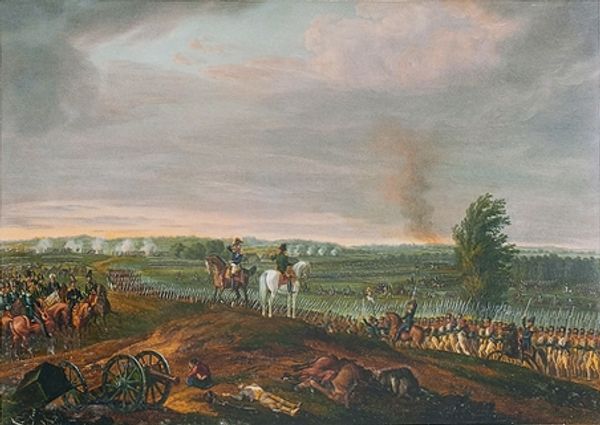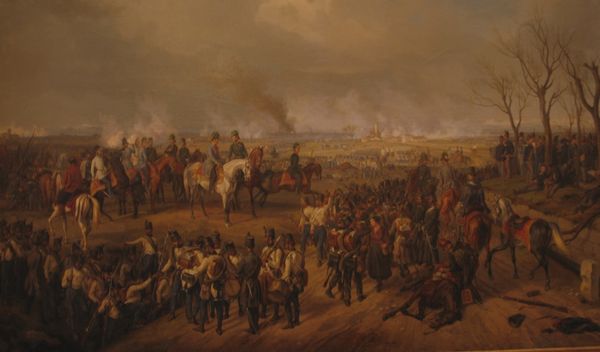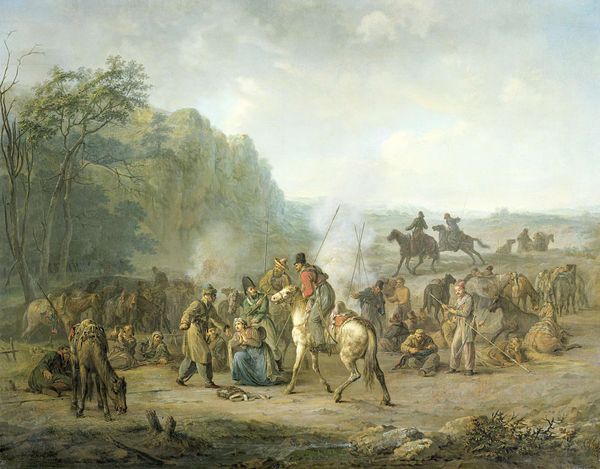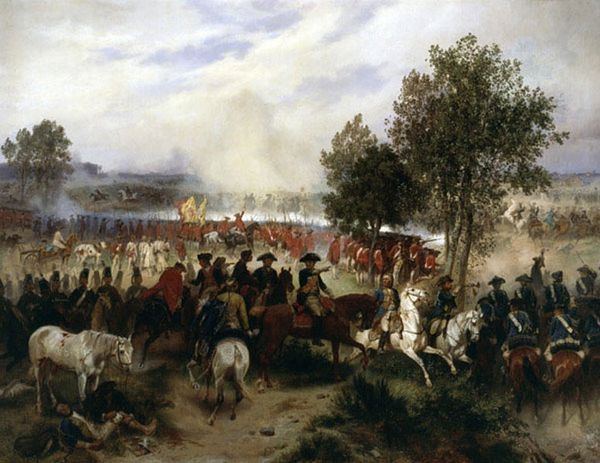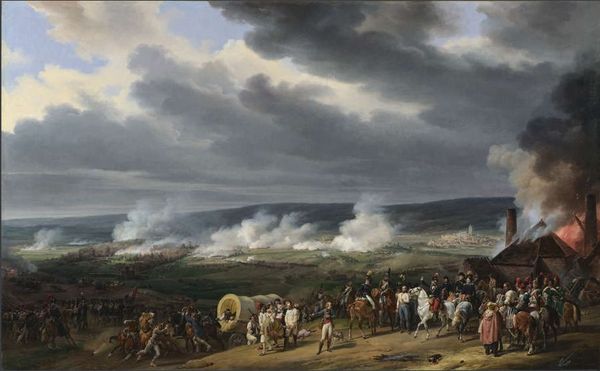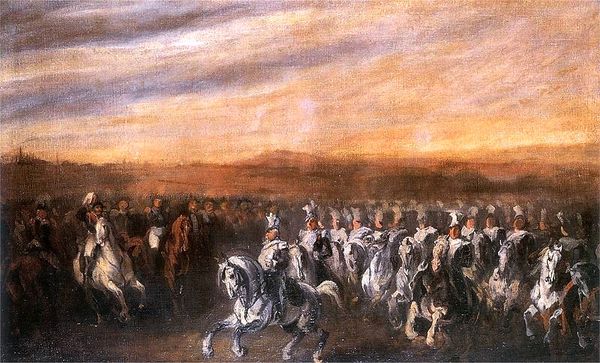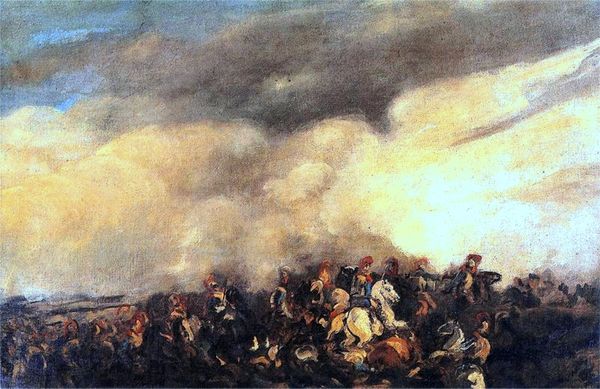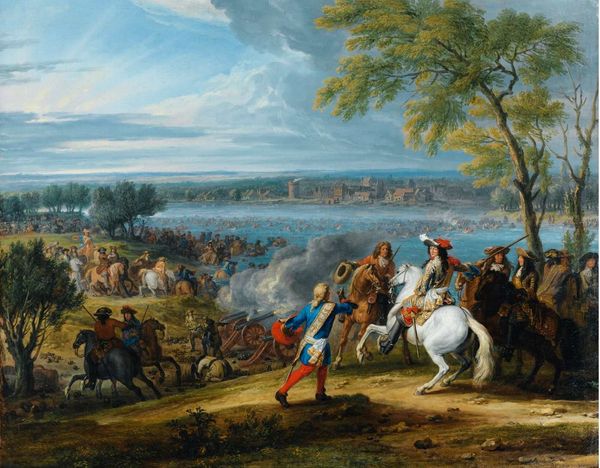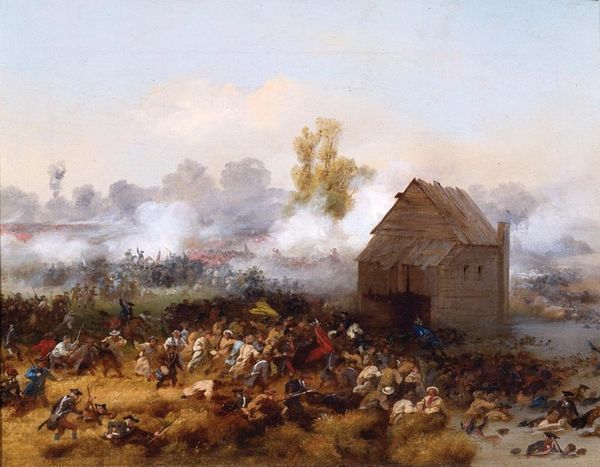
Dimensions: 208 x 364 cm
Copyright: Public domain
Editor: We're looking at Gerolamo Induno's "The Battle of Magenta," painted in 1859 using oil paint. It feels… chaotic. So many figures caught in the heat of battle. What do you see in this piece beyond just the obvious? Curator: It’s more than just a battle scene; it's a critical representation of Italian unification. Induno places the viewer within this chaos, implicating us. Consider how war disproportionately affects marginalized communities – the poor, women, people of color. Does the artist acknowledge this inequity, or romanticize conflict? Editor: I hadn't really considered that aspect. I was focused on the composition, the movement... Do you see that reflected in the brushstrokes, the colors used? Curator: Precisely. Note the muted tones, the dirt and grit. It steers clear of heroic, glorified depictions of war. It asks us to confront the raw reality and who pays the ultimate price. Induno wasn’t just documenting history; he was making a statement about power and its devastating impact. Think about who *isn't* represented here, too. Where are the voices of the civilians caught in the crossfire? Editor: That's a powerful point. I was initially drawn to the dynamism, but understanding its socio-political context and the potential silences within changes everything. Curator: Art isn’t created in a vacuum. By engaging with its historical and social dimensions, we can understand the complexities of the artist's choices and the enduring relevance of these visual narratives. Editor: This has given me a new lens for approaching historical paintings. I'll definitely look closer at who is represented—and who isn't. Thanks! Curator: Remember art can be a mirror reflecting our society, and a tool to change it.
Comments
No comments
Be the first to comment and join the conversation on the ultimate creative platform.
